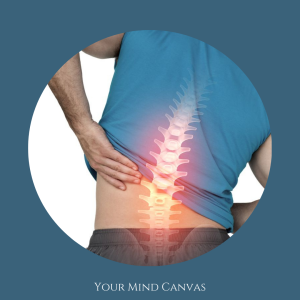
Sciatica
Are you sick of persistent discomfort radiating along your leg from down to your back? Your everyday life may be disrupted by sciatica, which can make even easy chores seem difficult. The good news? You can discover long-lasting comfort and resume your pain-free life with the correct information and aggressive measures. Let’s examine sciatica’s causes, signs, and practical remedies.
What Is Sciatica?
Sciatica is known as a crippling disorder that is typified by pain or paresthesia in the sciatic nerve distribution or a related lumbosacral nerve root. Any Nerve related pain in the legs or lower back discomfort is frequently mistakenly classified as sciatica due to a common misperception. Sciatica refers to discomfort that is directly caused by disease of the sciatic nerve or its roots. The sciatic nerve is the biggest nerve in the body, with a circumference of up to 2 cm with nerve roots extending from L4 to S3. Coughing, bending, twisting, and flexion of the lumbar spine can all make sciatica pain worse.
What Causes are making Sciatica So Common:
The main cause of sciatica is inflammation or compression of the sciatic nerve, though typical offenders include:
- Herniated Disc: One of the main causes is a herniated or slipped disc, in which the soft inner core of a spinal disc presses against the nerve by pushing through its sturdier outer layer.
- Spinal Stenosis: Nerve compression results from spinal stenosis, which is a narrowing of the spinal canal.
- Piriformis Syndrome: Sciatic nerve irritation caused by piriformis muscle spasms or tightness is known as piriformis syndrome.
- Trauma or injury: Direct harm to the pelvis or lower back.
- Degenerative disc disease: Spinal deterioration brought on by aging.
Symptoms of Sciatica:
Although sciatica symptoms can vary greatly, they frequently include:
- Legs, buttocks, and lower back discomfort that is sudden and intense.
- The affected leg may feel numb or tingly.
- Weakness of the foot or leg.
- Pain that gets worse when you sit for a long time or move quickly.
How Sciatica Is Diagnosed:
Sciatica is diagnosed by Imaging studies and physical examinations, as they are used in conjunction :
- Physical examination: Your physician may evaluate your pain locations, muscle strength, and reflexes. and some musculoskeletal test like Straight-leg raise, Lasegue sign, Bowstring sign, crossed straight leg test.
- Imaging examinations: The underlying reason, like a herniated disc, can be found using an MRI or CT scan. It is possible to assess plain lumbosacral spine films for spondylolisthesis or fracture. If plain films show no fracture, a non-contrast CT scan may be used to assess the condition. Immediate magnetic resonance imaging is the gold standard for determining the source of pain and ruling out urgent surgical pathology when a neurologic deficit is present or a mass effect is suspected.
What are the treatment options:
The severity of sciatica and its underlying cause determine how it should be treated:
- Non-Surgical Interventions:
- Rest and activity modification: Steer clear of things that make the pain worse.
- Physical therapy: Specific exercises can increase flexibility and strengthen the spine.
- Medications include muscle relaxants, anti-inflammatory medications, and over-the-counter pain medicines.
- Using alternating heat and cold packs to alleviate pain and inflammation is known as heat and ice therapy.
- Surgical Interventions:
- In extreme situations where nerve compression results in severe paralysis or loss of bladder/bowel control, surgery could be advised.
- Patients who are unable to manage their leg pain, find the natural sciatica recovery process too sluggish, and wish to shorten the time it takes to recover from pain are more likely to choose for surgery.
Myths Regarding Sciatica Diagnosis and Treatment:
Sciatica has many misconceptions regarding the causes, symptoms, and treatment since it is frequently misunderstood. One widespread misconception is that sciatica is a disease unto itself; in reality, it is a sign of a more serious problem, like spinal stenosis or a herniated disc. Sciatica can extend into the legs, buttocks, and even into the feet, despite the common misconception that it primarily causes pain in the lower back. Another myth is that the best rest is the best treatment ; nevertheless, extended periods of inactivity can exacerbate the illness. Finally, despite the belief that sciatica always necessitates surgery, the majority of patients recover with non-invasive therapies like physical therapy, exercise, and medication. Better care and healing for those impacted can result from an understanding of these myths.
How to Avoid this Common Condition:
Keeping a healthy spine and way of life are key to preventing sciatica:
- Frequent Mobility exercise: To maintain the spine, strengthen your core muscles.
- Good posture: Steer clear of slouching when standing or sitting.
- Ergonomic furniture: Make use of desks and chairs made to ease back pain.
- Weight control: Carrying too much weight might put further strain on the spine.
The first step to managing and recovering from sciatica effectively is to understand its facts. For a precise diagnosis and individualized treatment plan, speak with a healthcare provider if you or a loved one is exhibiting symptoms. Your quality of life can be enhanced and complications can be avoided by treating sciatica as soon as possible.